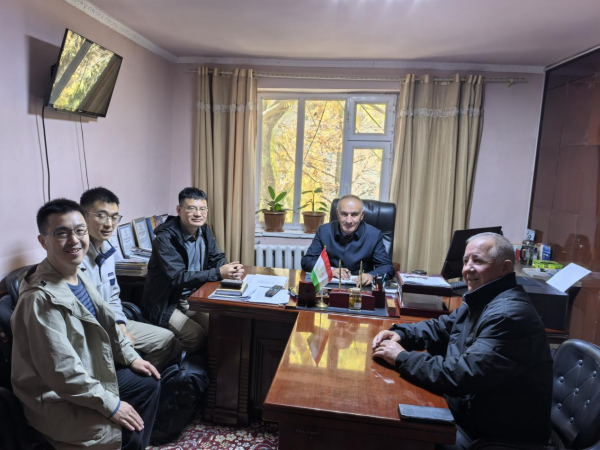Sino-Tajik Collaboration Promotes Digitization of Herbarium Specimens
2025-11-10
High in the Pamir Mountains, a treasure trove of plant life is being brought into the digital age thanks to a collaborative effort between Chinese and Tajik scientists. A team from the Xinjiang Institute of Ecology and Geography (XIEG) of the Chinese Academy of Sciences recently completed a two-week mission to the Pamir Biological Institute in Khorog, Tajikistan, to digitize its invaluable herbarium collection.
Led by Prof. LI Wenjun, Head of the Herbarium, the XIEG team worked alongside their Tajik counterparts to transform the institute's collection of approximately 15,000 plant specimens into a readily accessible digital archive.
The Pamir Biological Institute, a vital research center since 1969, houses a unique collection of plants, many of which are rare, endangered, and endemic to the high-altitude Pamir Plateau. These specimens provide a crucial baseline for understanding the region's biodiversity and monitoring the impacts of climate change.
For decades, these irreplaceable specimens have been preserved using traditional methods, relying on paper labels and physical storage. While effective, this approach presented challenges for data sharing and long-term preservation. The digitization project addresses these challenges head-on, creating a secure and easily searchable record of the collection.
The XIEG team brought specialized equipment and expertise to the Pamir Biological Institute, establishing standardized imaging platforms, implementing barcode systems, and streamlining data entry procedures. Crucially, they also provided hands-on training to their Tajik colleagues, ensuring the long-term sustainability of the digitization effort.
The initial results are impressive: over 13,300 plant specimens have already been imaged. These high-resolution images will serve as a vital resource for researchers and conservationists around the world, enabling them to study and protect the unique flora of the Pamir Plateau.
"This collaboration is about more than just digitization; it's about unlocking the potential of these specimens to advance our understanding of plant life in this critical region," said Prof. Li Wenjun. "By making this data accessible, we can empower scientists and conservationists to make informed decisions about the future of the Pamir's biodiversity."
The two institutions are also planning further collaborations, including joint plant surveys, the creation of a comprehensive biodiversity catalog for the Pamir region, and the establishment of a germplasm resource collection network.
XIEG is actively engaged in similar digitization initiatives with leading herbaria and botanical institutes across Central and Western Asia. To date, over one million vascular plant specimens have been digitized, creating a powerful resource for biodiversity research and conservation.

Discussion with the Director of the Pamir Biological Institute. (Image by XIEG)

Technical training at the Pamir Biological Institute. (Image by XIEG)
Contact
LONG Huaping
Xinjiang Institute of Ecology and Geography
E-mail: longhp@ms.xjb.ac.cn
Web: http://english.egi.cas.cn



